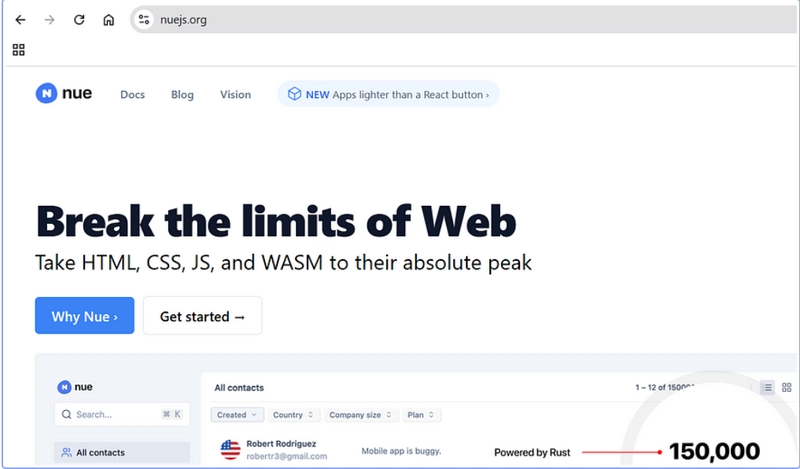Why Mobile Recharge APIs are the Future of the Telecom Industry
The telecom industry has undergone dramatic transformations in recent years, and mobile recharge services are at the forefront of this revolution. With a growing emphasis on digital payments and customer convenience, Mobile Recharge APIs are becoming an integral part of the future of the telecom sector. These APIs offer a simplified, secure, and efficient way to facilitate mobile top-ups, bill payments, and other telecom-related services. In this article, we explore how mobile recharge API development solutions are shaping the future of the telecom industry, benefiting businesses, consumers, and service providers alike. What is a Mobile Recharge API? A Mobile Recharge API is a software interface that allows businesses to integrate mobile recharge services into their platforms. It enables users to top-up prepaid mobile plans, pay postpaid bills, recharge DTH services, and even make utility payments through third-party platforms. The API acts as a bridge, connecting service providers, payment gateways, and end-users, ensuring a smooth and seamless transaction process. Mobile Recharge APIs empower businesses by offering a centralized and automated system for executing mobile recharges, reducing the need for manual intervention. They provide a secure and scalable solution for businesses to offer recharge services to their customers, enhancing both customer experience and business efficiency. Convenience and Accessibility One of the primary reasons why Mobile Recharge APIs are the future of the telecom industry is the convenience they offer. Today, customers expect easy access to mobile recharge services without the hassle of visiting a retail store or physical recharge point. With Mobile Recharge API integration, businesses can offer recharge services directly on their websites or apps, making it easier for customers to recharge their phones anytime and anywhere. Whether it's a small business, e-commerce platform, or a large telecom service provider, integrating a mobile recharge API allows customers to access recharge options seamlessly. This digital convenience leads to higher customer satisfaction and fosters customer loyalty, making it a win-win for businesses. Increased Revenue Opportunities for Businesses For businesses, integrating a mobile recharge API development solution opens up a new revenue stream. Businesses can earn commissions from each recharge transaction processed through their platform. Moreover, with the growing demand for mobile recharge services, businesses can capitalize on the frequent recharges made by customers, providing a consistent flow of income. For example, retailers, online stores, and service providers can offer mobile recharge services alongside their existing products or services. This not only increases customer retention but also attracts a new customer base interested in the convenience of one-stop solutions for all their needs. Additionally, by offering value-added services like bill payments, businesses can diversify their revenue sources and become a go-to platform for various essential services. Seamless Integration with Existing Systems Mobile Recharge APIs are designed to be highly flexible, making integration with existing systems a simple and efficient process. Businesses that already have websites, mobile apps, or e-commerce platforms can easily incorporate a mobile recharge API into their existing infrastructure. With minimal technical expertise required, integration can often be done in a matter of days. Most mobile recharge APIs come with detailed documentation and developer support, allowing businesses to quickly set up and customize the service to meet their specific needs. For telecom operators, integrating mobile recharge APIs with their existing billing and CRM systems can also streamline operations, reduce customer service issues, and enhance customer engagement. By providing a unified platform for all telecom services, businesses can ensure a seamless experience for their customers. Cost-Effective Solution For telecom companies and businesses offering recharge services, Mobile Recharge APIs provide a cost-effective solution. Traditionally, telecom companies and resellers relied on expensive hardware, infrastructure, and manual processes to handle recharge services. This setup often involved significant operational costs and inefficiencies. Mobile Recharge APIs eliminate the need for physical infrastructure, relying instead on cloud-based systems that can scale as needed. By integrating the API into their platform, businesses can offer mobile recharge services at a fraction of the cost while also reducing overheads related to hardware, maintenance, and staff. This makes it an attractive solution for both large telecom providers and small businesses looking to enter the mobile recharge market. Scalability and Flexibility The telecom industry is vast and diverse, with varying demands across different regions and customer segment

The telecom industry has undergone dramatic transformations in recent years, and mobile recharge services are at the forefront of this revolution. With a growing emphasis on digital payments and customer convenience, Mobile Recharge APIs are becoming an integral part of the future of the telecom sector. These APIs offer a simplified, secure, and efficient way to facilitate mobile top-ups, bill payments, and other telecom-related services. In this article, we explore how mobile recharge API development solutions are shaping the future of the telecom industry, benefiting businesses, consumers, and service providers alike.
What is a Mobile Recharge API?
A Mobile Recharge API is a software interface that allows businesses to integrate mobile recharge services into their platforms. It enables users to top-up prepaid mobile plans, pay postpaid bills, recharge DTH services, and even make utility payments through third-party platforms. The API acts as a bridge, connecting service providers, payment gateways, and end-users, ensuring a smooth and seamless transaction process.
Mobile Recharge APIs empower businesses by offering a centralized and automated system for executing mobile recharges, reducing the need for manual intervention. They provide a secure and scalable solution for businesses to offer recharge services to their customers, enhancing both customer experience and business efficiency.
- Convenience and Accessibility
One of the primary reasons why Mobile Recharge APIs are the future of the telecom industry is the convenience they offer. Today, customers expect easy access to mobile recharge services without the hassle of visiting a retail store or physical recharge point. With Mobile Recharge API integration, businesses can offer recharge services directly on their websites or apps, making it easier for customers to recharge their phones anytime and anywhere.
Whether it's a small business, e-commerce platform, or a large telecom service provider, integrating a mobile recharge API allows customers to access recharge options seamlessly. This digital convenience leads to higher customer satisfaction and fosters customer loyalty, making it a win-win for businesses.
- Increased Revenue Opportunities for Businesses
For businesses, integrating a mobile recharge API development solution opens up a new revenue stream. Businesses can earn commissions from each recharge transaction processed through their platform. Moreover, with the growing demand for mobile recharge services, businesses can capitalize on the frequent recharges made by customers, providing a consistent flow of income.
For example, retailers, online stores, and service providers can offer mobile recharge services alongside their existing products or services. This not only increases customer retention but also attracts a new customer base interested in the convenience of one-stop solutions for all their needs. Additionally, by offering value-added services like bill payments, businesses can diversify their revenue sources and become a go-to platform for various essential services.
- Seamless Integration with Existing Systems
Mobile Recharge APIs are designed to be highly flexible, making integration with existing systems a simple and efficient process. Businesses that already have websites, mobile apps, or e-commerce platforms can easily incorporate a mobile recharge API into their existing infrastructure.
With minimal technical expertise required, integration can often be done in a matter of days. Most mobile recharge APIs come with detailed documentation and developer support, allowing businesses to quickly set up and customize the service to meet their specific needs.
For telecom operators, integrating mobile recharge APIs with their existing billing and CRM systems can also streamline operations, reduce customer service issues, and enhance customer engagement. By providing a unified platform for all telecom services, businesses can ensure a seamless experience for their customers.
- Cost-Effective Solution
For telecom companies and businesses offering recharge services, Mobile Recharge APIs provide a cost-effective solution. Traditionally, telecom companies and resellers relied on expensive hardware, infrastructure, and manual processes to handle recharge services. This setup often involved significant operational costs and inefficiencies.
Mobile Recharge APIs eliminate the need for physical infrastructure, relying instead on cloud-based systems that can scale as needed. By integrating the API into their platform, businesses can offer mobile recharge services at a fraction of the cost while also reducing overheads related to hardware, maintenance, and staff. This makes it an attractive solution for both large telecom providers and small businesses looking to enter the mobile recharge market.
- Scalability and Flexibility
The telecom industry is vast and diverse, with varying demands across different regions and customer segments. Mobile Recharge API development solutions are highly scalable, allowing businesses to grow without the need for significant infrastructure changes.
As mobile usage continues to grow and new telecom services emerge, businesses can expand their service offerings by integrating additional functionalities into their existing mobile recharge API. For instance, they can start with prepaid recharges and gradually introduce postpaid bill payments, DTH services, utility bills, or even mobile data plans. This flexibility allows businesses to adapt to evolving market demands and customer needs without needing to overhaul their entire system.
- Security and Trust
In the digital payment era, security is one of the most crucial factors for both businesses and customers. Mobile recharge transactions involve sensitive financial information, making it essential for businesses to prioritize security.
Mobile Recharge APIs are designed with robust security protocols, such as encryption, secure payment gateways, and two-factor authentication, to ensure that all transactions are safe and secure. These security features not only protect customers’ financial data but also help businesses maintain their reputation by building trust with users.
For businesses, using a trusted Mobile Recharge API provider guarantees that the transactions are processed through secure channels, minimizing the risk of fraud, chargebacks, and data breaches. This is crucial in a competitive market where customers are more likely to engage with platforms that they perceive as safe.
- Enhanced Customer Experience
In the competitive world of telecom services, providing an excellent customer experience is crucial for retaining users and fostering loyalty. Mobile Recharge APIs improve the customer experience by offering a quick and easy way to recharge mobile phones, pay bills, or top-up services without requiring users to visit physical stores or go through complicated processes.
With features like automatic recharges, reminders, and the ability to store payment preferences, businesses can offer a more personalized service that meets the specific needs of their customers. Moreover, API providers often offer customer support, reporting tools, and analytics to help businesses better understand their customers and refine their services.
The more streamlined and user-friendly the recharge process is, the more likely customers are to return to your platform, increasing overall business retention and growth.
- Better Data Insights and Analytics
Mobile Recharge APIs also provide businesses with valuable data insights. By analyzing user behavior and transaction history, businesses can gain insights into what products or services are most popular, when users are most likely to recharge, and which payment methods are most commonly used.
This data is valuable for creating targeted marketing campaigns, promotions, and personalized offers. For example, businesses can offer discounts on recharge services during peak usage periods or target users who haven’t recharged in a while with special offers. The ability to analyze data also helps businesses refine their services and improve overall customer satisfaction.
Conclusion
Mobile Recharge APIs are revolutionizing the telecom industry by providing businesses with a secure, scalable, and cost-effective solution to offer mobile top-ups and bill payments. With benefits like increased revenue opportunities, improved customer convenience, and seamless integration, it’s no surprise that these APIs are becoming a crucial part of the telecom landscape.
By integrating Mobile Recharge API development solutions, businesses can not only offer new services but also enhance customer engagement, improve security, and increase operational efficiency. As the demand for mobile recharge services continues to grow, businesses that embrace this technology will position themselves as industry leaders, delivering cutting-edge services that meet the ever-evolving needs of their customers.
In the fast-paced and competitive telecom industry, those who integrate mobile recharge APIs will have a distinct advantage in providing seamless, customer-friendly experiences that drive success.











































































































































































![[The AI Show Episode 142]: ChatGPT’s New Image Generator, Studio Ghibli Craze and Backlash, Gemini 2.5, OpenAI Academy, 4o Updates, Vibe Marketing & xAI Acquires X](https://www.marketingaiinstitute.com/hubfs/ep%20142%20cover.png)




























































































































![[DEALS] The Premium Learn to Code Certification Bundle (97% off) & Other Deals Up To 98% Off – Offers End Soon!](https://www.javacodegeeks.com/wp-content/uploads/2012/12/jcg-logo.jpg)


![From drop-out to software architect with Jason Lengstorf [Podcast #167]](https://cdn.hashnode.com/res/hashnode/image/upload/v1743796461357/f3d19cd7-e6f5-4d7c-8bfc-eb974bc8da68.png?#)








































































































.png?#)


































_Christophe_Coat_Alamy.jpg?#)
.webp?#)
 (1).webp?#)






































































































![Apple Considers Delaying Smart Home Hub Until 2026 [Gurman]](https://www.iclarified.com/images/news/96946/96946/96946-640.jpg)
![iPhone 17 Pro Won't Feature Two-Toned Back [Gurman]](https://www.iclarified.com/images/news/96944/96944/96944-640.jpg)
![Tariffs Threaten Apple's $999 iPhone Price Point in the U.S. [Gurman]](https://www.iclarified.com/images/news/96943/96943/96943-640.jpg)

































































































































